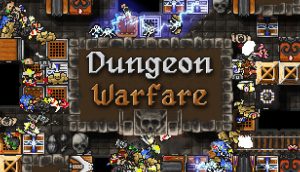Mechs V Kaijus is a tower defense game based on Japanese kaiju films like Gojira. Notably, the setting is tweaked to be more favorable towards the human defenders, but ultimately, it does a great job adapting the overall genre to a video game.
Presentation
The graphics look like your typical 2D indie game; nothing out of this world, but clearly made by a talented artist. I wasn’t a huge fan of the kaiju designs, and the tower designs were a mixed bag, yet it maintained a relatively consistent style that worked well enough.
Sonically, I found the sound effects and voice acting to be par for the course. The soundtrack had some strong highs and some tough lows, but it was typically good.
Gameplay
In a genre like tower defense, nearly all of a game’s enjoyment comes from the gameplay. Most have mediocre graphics, a forgettable story, and maybe a decent soundtrack. MvK is cut from the same cloth but manages to do something unique with its mechanics, primarily the combined arms approach to combat, but also in its level design.
When you first start playing, you’ll notice that you control a mech. This isn’t a super common mechanic, but a number of TD titles give you some sort of ability to shoot at enemies. What sets this apart from the rest is that your mech can be deployed to the battlefield like a tower. Later on, you can bring multiple mechs with you, and even later you can build factories that construct military vehicles to further support your defense. As I unlocked more and more of these units and building it started to remind me of Starcraft custom games, specifically the defense-oriented ones where you control a hero unit while building defenses and training lesser units to hold off the waves of attackers. It also does a surprisingly good job approximating how kaiju films typically portray the earth’s defenses against aliens/monsters. It’s not the most impactful mechanic or anything, but it’s a fun element that helps it stand out from the crowd.
That being said, MvK is not without flaws. Instead of enemies following a set path, they swarm your defenses from the side of the screen. They are loosely split into lanes, but they can get bumped around the edges of a wall you’ve built fairly easily. It’s maybe a more realistic take on TD waves, but it’s frustrating to have enemies get past your defenses because they are a few pixels too narrow. This could have been solved by allowing walls to connect to avoid gaps between them, or by restricting enemy movement to the lane they spawn in. This issue is made worse due to the random placement of tower slots. You can only build on these designated spots, but sometimes they are set up where a wall might block 90% of enemies in a lane while the rest barely walk around it.
Progression
MvK features a tech tree to unlock new abilities, towers, mechs, etc., as well as a currency system that can be used for permanent upgrades and temporary boosts. These aren’t groundbreaking ideas or anything, but they’re executed in strange ways.
The tech tree is quite extensive, to the extent that I beat the game, all of the optional levels, and every challenge level, and still had five or so things to research. This also includes when I was grinding research by playing the first level ~15 times in a row due to my technology lagging behind my level progress. The main issue seemed to be pricing, especially some of the later tech that required multiple missions worth of research. This was exacerbated by the inability to refund your research, so you’re stuck with any bad choices you made. I didn’t make any egregious technology decisions, but I still felt like the early game was bland because of how long it takes to unlock more towers and defenses. On the other hand, once I got deeper into the tree, the unlocks were more varied and interesting.
The other half of the progression system is similar to the tech tree, but with a few major differences. First, money is mainly spent on your mechs, rather than your overall defense. Second, while upgrades are permanent, repairs are a neverending money sink, so you will always need to have a small cash reserve for a rainy day. Finally, the number of upgrades is significantly lower than the number of technologies. In totality, this system encourages you to use your mechs as little as possible until you can fully upgrade them, otherwise, you will be stuck wasting your money on repairs. After upgrading everything, you can now spend money on onetime boosts like spawning a tank or calling in an airstrike. It’s a bit odd, but it accomplishes its goal of giving you something to spend your money on later in the game, so I’m fine with it.
Verdict
I was originally indifferent towards MvK, but I grew to like it more and more as I played. It’s a great game once you get through the rough opening leg, but I suspect many players won’t be willing to put up with its early mediocrity. It also has a noticeable lack of polish, from the clunky UI to the intermittent bugs. I would still recommend it to tower defense fans based on the strength of its back half, but it certainly isn’t a must-play game.




